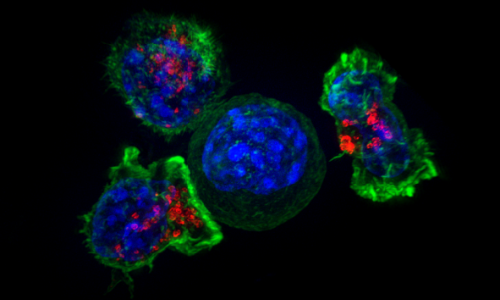Loading
Journal of Cancer Immunology
ISSN: 2689-968X
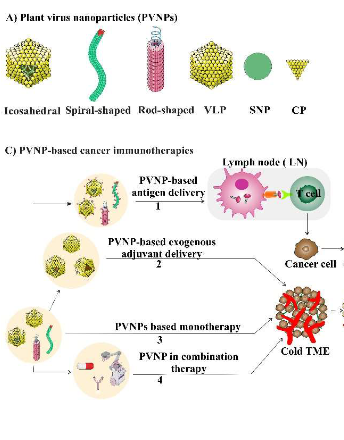
2022
Volume 4, Issue 1, p1-32
Articles published in this issue are Open Access and licensed under Creative Commons Attribution License (CC BY NC) where the readers can reuse, download, distribute the article in whole or part by mentioning proper credits to the authors.
Clinical, FDG-PET and Molecular Markers of Immune Checkpoint Inhibitor Response in Patients with Advanced Merkel Cell Carcinoma
Julia R Dixon-Douglas, Luke S McLean, Alex Caneborg, Richard W Tothill, Grace Kong, Rodney J Hicks, Shahneen Sandhu
Merkel cell carcinoma (MCC) is a rare, highly aggressive, neuroendocrine cancer of the skin with an increasing incidence. MCC occurs predominantly in older adults with risk factors including high exposure to ultra-violet (UV) light and immunosuppression.
J Cancer Immunol, 2022, Volume 4, Issue 1, p1-11 | DOI: 10.33696/cancerimmunol.4.058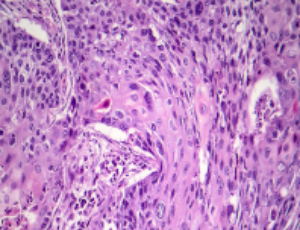
MEK Inhibition in KRAS Mutated NSCLC: Quo vadis?
Kira-Lee Koster, Patrizia Froesch, Michael Mark, Sacha I. Rothschild, Martin Früh
Lung cancer continues to be the leading cause of cancer deaths worldwide. Approximately 85% of lung cancers are histologically classified as non-small cell lung cancer (NSCLC) of which adenocarcinoma is the most frequent subtype.
J Cancer Immunol, 2022, Volume 4, Issue 1, p12-16 | DOI: 10.33696/cancerimmunol.4.059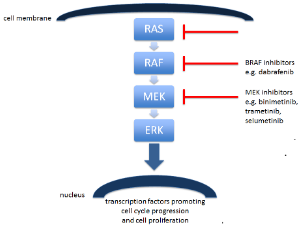
Cancer-Related Pain: Inside a New Dynamic Personalized Approach. A Narrative Review
Mariateresa Giglio, Giustino Varrassi, Filomena Puntillo
Chronic cancer-related pain, according to the latest International Classification of Diseases (ICD-11), is defined as “chronic pain caused by the primary cancer itself or metastases (chronic cancer pain) or its treatment (chronic post-cancer treatment pain)”.
J Cancer Immunol, 2022, Volume 4, Issue 1, p17-21 | DOI: 10.33696/cancerimmunol.4.060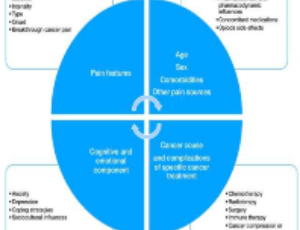
Emerging Potential of Plant Virus Nanoparticles (PVNPs) in Anticancer Immunotherapies
Mehdi Shahgolzari, Steven Fiering
Plant virus nanoparticles (PVNPs) are increasingly recognized and studied for use in biomedical applications. PVNPs include plant virions with self-assembled capsid protein coats (PC) that encapsulate the virus genome, and virus-like particles (VLPs), a capsid without the viral genome.
J Cancer Immunol, 2022, Volume 4, Issue 1, p22-29 | DOI: 10.33696/cancerimmunol.4.061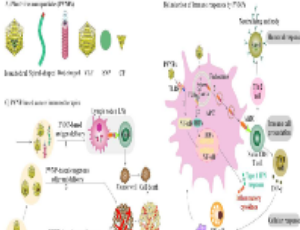
OGR1-a Novel Modulator Target of Tumor Immunotherapy
Guoxin Zhang, Ran Gao
Tumors mainly utilize glucose to promote aerobic glycolysis for their survival (Warburg effect). The highly glycolytic environment is not suitable for the survival and function of effector T cells, and leads to the decline of antitumor immunity.
J Cancer Immunol, 2022, Volume 4, Issue 1, p30-32 | DOI: 10.33696/cancerimmunol.4.062
Recommended Articles
Chimeric Antigen Receptor CAR NK Cells Emerging Immunotherapy for the Treatment of Cancer
Although NK cells are recognized as effector lymphocytes of the innate immune system, they also regulate the adaptive immune response by releasing inflammatory cytokines and developing immunological memory. Unlike other lymphocytes such as T or B cells, NK cells do not express rearrangeable, antigen-specific receptors.
Prospective Evaluation of Effect of Metformin on Activation of AMP-activated Protein Kinase (AMPK) and Disease Control in a Sub-group Analysis of Patients with GI Malignancies
Observational studies have demonstrated association of metformin with reduced cancer incidence and mortality in multiple cancer types, including gastrointestinal (GI) malignancies. Anti-neoplastic effects of metformin are believed through many mechanisms including activation of AMP-activated protein kinase, which controls mammalian target of rapamycin (mTOR) growth regulatory pathway.
Development of Metal Oxide Nanoparticles as Semiconductors
The variety of methods employed during the fabrication of MONPs can alter the characteristics and control the properties of the obtained nano-oxides. The reaction mechanisms and, therefore, the functionality of nanostructured MOx depend on their composition
Impact of Cisplatin Dosing Regimens on Mammary Tumor Growth in an Animal Model
In a recent paper, we introduced a variant of the classical Simeoni tumor growth model, and illustrated its value in assessing tumor growth in a reproducible mouse model for mammary tumors. Our modification consisted of incorporating delay differential equations in the mathematical formulation of the Simeoni model, to represent the delay in drug action often observed under chemotherapeutic or immunotherapeutic regimens.
Deubiquitinase as Potential Targets for Cancer Immunotherapy
During the last few decades, immunotherapy is considered to be an important approach to help our immune system to fight various kinds of diseases, such as tumor. Sometimes, it works very well for some types of cancers, for example: bladder cancer, colorectal cancer, breast cancer and lymphoma.
The Effect of Glucocorticoids on Angiogenesis in the Treatment of Solid Tumors
Glucocorticoids (GCs) are defined by their role in maintaining glucose homeostasis and natural GCs are a class of corticosteroids secreted by the adrenal cortex. Cortisol is the most important natural GC in humans. Cellular cortisol levels are regulated by the tissue-specific metabolic enzymes 11β-hydroxysteroid dehydrogenase 1 and 2 (11β-HSD 1 and 2); 11β-HSD 1 converts inactive cortisone to active cortisol, while 11β-HSD 2 has the opposite function.
Role of the Gut Microbiome in the Modulation of Cancer Immunotherapy Response
The gut microbiome or gut flora is a vast community of microorganisms such as bacteria, viruses, protozoa, and fungi that inhabit the digestive tract of the human and other animals [1,2]. In the human body, bacterial species colonize into the oral cavity, skin, vagina, and placenta, however, the largest population of microorganisms resides in the intestine.
Do Support Vector Machines Play a Role in Stratifying Patient Population Based on Cancer Biomarkers
Cancer is a worldwide public health issue that affects millions of people every year. In 2018 there were 17 million newly documented cases of cancer globally (8.8 million in men and 8.2 million in women), leading to 9.6 million deaths. Cancer is a vastly heterogeneous disease, with over 100 different types of cancer currently identified in humans; the most common types of cancer are lung, female breast, bowel and prostate, these four types account for more than 40% of all new cancer case
Prognostic Role of Human Epididymis Protein 4 (HE4) in Ovarian Cancer Treatment: Our Point of View
In the last 10 years, the marker “Human Epididymis protein 4 (HE4)” for the management of gynecological tumors has entered powerfully in the world literature. At the moment, carrying out an accurate research in the main scientific portals such as PubMed, we can find more than 2,000 works concerning Cancer antigen-125 (Ca125), but those concerning HE4 are less than 400.
Can Filtration Technology Advance Culture of Circulating Tumor Cells towards Precision Medicine?
Today, cancer is the second leading cause of death, with about 9.6 million deaths globally in 2018 [1]. At the end of the 19th century, Paul Ehrlich contributed a milestone to cancer research by introducing chemotherapy as a promising tumor treatment approach. Since then, cancer treatment has undergone tremendous advances, with chemotherapy still being a widely used cancer treatment method today, however, often associated with severe side effects.
Influence of Clinical Risk Factors on Outcomes in Men with Stage I Non-Seminomatous Germ Cell Tumor Undergoing Robot-Assisted Retroperitoneal Lymph Node Dissection
Retroperitoneal lymph nodes are often the first landing site of metastatic disease in men with testicular cancer. Primary retroperitoneal lymph node dissection (RPLND) for clinical stage I NSGCT can accurately surgically stage patients who may have nodal micrometastases, and in some cases, can serve as the primary therapy when volume of metastasis is low.
Forces, Chromosomal Configurations, and Carcinogenesis: Towards Another Therapeutic Approach
Various types of forces, such as cohesive and adhesive forces, are involved in physical and biological processes. Many of these processes appear to have developmental features through different scales of nature, and such processes may reflect a universal dynamic of accommodation involving the universal dimensional constants
Botulinum Toxin: The Promising Future of Prostate Cancer Treatment
Botulinum toxin (BT) is a potent poisonous neurotoxin produced by the bacterium Clostridium botulinum and related species [1]. Its action consists of inhibiting neuromuscular junctions by blocking the release of acetylcholine and desensitizing sensory nerves.
Primary Small Cell Neuroendocrine Carcinoma of Bladder – A Rare Diagnostic Entity
Primary small cell neuroendocrine carcinoma of the urinary bladder is a rare histological type shows poor differentiation and behaves in a highly aggressive manner. It accounts to 0.3- 0.7% of all bladder tumors [1,2]. Neuroendocrine carcinomas predominantly occur in respiratory and gastrointestinal tract and very rarely in the urinary bladder.
Salivary Protein Antigens for Breast Cancer Biomarkers
Breast Cancer is the most regularly diagnosed type of cancer in women in the world, making up on its own 25% of all cases, or nearly 2 million new cases in 2018, and 15% of all cancer related deaths, or around 626,700 deaths for that same year.
Commentary on "The Gene Master Regulators GMR Approach Provides Legitimate Targets for Personalized, Time-Sensitive Cancer Gene Therapy"
For decades, the scientific community tried hard to identify the gene biomarkers whose mutations or regulations cause (better say are associated with) specific forms of cancer. For instance, the September 17th 2019 release of the Genomic Data Commons Data Portal includes 3,142,246 mutations detected in 22,872 genes sequenced from 37,075 cases of cancers localized in 67 primary sites.
Leucocyte-Tumor Cell Hybridization Can Initiate Cancer Metastasis
According to estimates from the International Agency for Research on Cancer, by the year 2030 there will be 22 million new cancer cases and 13 million deaths per year. The main reason for death from cancer is not the initial tumor but it’s metastasis to distant parts of the body, yet this process has remained poorly understood for quite some time.
NOXA the BCL-2 Family Member behind the Scenes in Cancer Treatment
NOXA is a critical mediator of stress responses to anticancer drugs. This BH3-only protein sets the apoptotic threshold in cancer cells in response to chemotherapies by counteracting the prosurvival BCL-2 family protein MCL-1. A complex and dynamic network relying on both highly controlled gene transcription activity and protein degradation by proteasome, regulates cellular NOXA levels from low in steady state to rapidly enhanced upon stressful condition.
Gene Therapy for Sickle Cell Disease: Start of a New Era
This manuscript reviews treatment of Sickle Cell disease over time. The application of allogeneic stem cells proved the sickle cell disease could be permanently corrected and cured but limited to those with a compatible donor.
CTLA-4 and PD-L1 or PD-1 Pathways: Immune Checkpoint Inhibitors and Cancer Immunotherapy
The immune system developed certain checks and balance to control or inhibit the reactivity against normal cells of the body. Uncontrolled immune responses to the non-self entities such as bacteria, viruses, parasites, or mutated self-antigens can cause an inflammatory reaction and autoimmune diseases.
About Scientific Archives
Scientific Archives is a global publisher initiated with the mission of ensuring equal opportunity for accessing science to research community all over the world. Spreading research findings with great relevance to all channels without any barrier is our goal. We want to overcome the challenges of Open Access with ensured quality and transparency.

